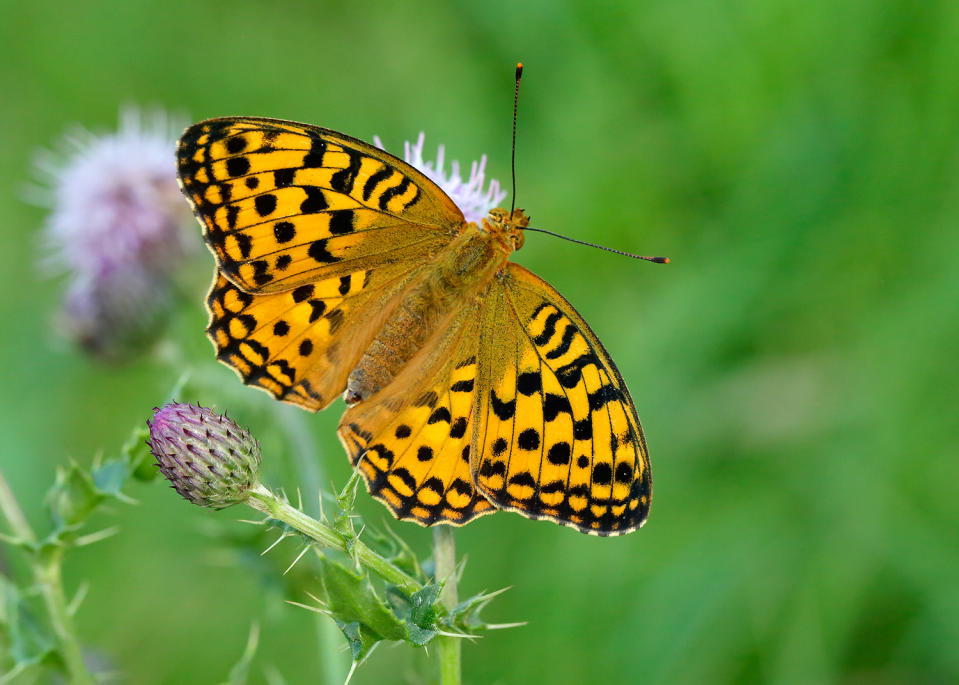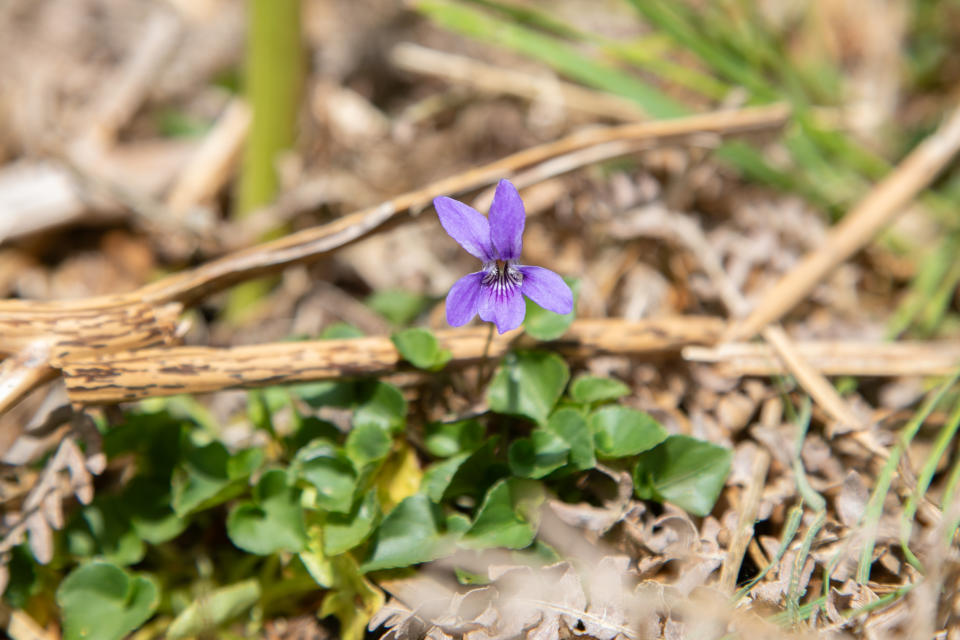Hairy hogs and Longhorn cattle act as ‘living lawnmowers’ to help rare butterfly
Hairy Hungarian hogs have been drafted in to create the perfect habitat for the UK’s most endangered butterfly, conservationists said.
The curly-haired Mangalitsa pigs and English Longhorn cattle are being deployed as “living lawnmowers” at a National Trust site on Exmoor, Devon, to help create the ideal breeding conditions for the high brown fritillary.
The butterfly, one of the biggest in the UK with a wingspan of up to 67mm (2.6 inches), was once widespread across England and Wales.

But it has suffered dramatic declines since the 1960s as a result of habitat being developed and changes in the way land is managed, nature charity Butterfly Conservation said.
Since 1978, the high brown fritillary’s population had fallen 65% and its distribution had declined by 87%, with the insect found only in three locations in England, the charity said.
One of sites where it still exists is the National Trust’s Heddon Valley, near Barnstaple, where Butterfly Conservation says the south-facing bracken-covered slopes offer ideal breeding conditions – but trees and shrubs quickly take over the habitat.
So Butterfly Conservation is using the Hungarian breed of pigs and the cattle to graze down growing plants, to create space for the common dog-violets that are the sole food plant for the insect’s distinctive spiky caterpillars.

Fencing has been constructed around three fields to target the livestock in specific areas, while volunteers have been drafted in to clear other scrub plants such as thorny gorse which could take over the habitat.
The team are also collecting tiny seeds from the common dog-violet and germinating new plants in an off-site nursery so they can plant them in new locations to increase the extent of potential breeding habitat, the charity said.
The project is being funded by a £228,000 species recovery grant from Natural England, with £12,000 each contributed by Butterfly Conservation and the National Trust, which also provided the livestock from a nearby site.
Butterfly Conservation project officer Ellie Wyatt said: “This is an incredibly exciting project and working with the National Trust is very rewarding.
“The trust has been working with the pigs for a couple of years and noticed how their rootling actions benefited the soil and encouraged violets to germinate, so it’s great to continue this work to help save the high brown fritillary.
“The Longhorn cattle are also gorgeous and look majestic in the landscape and I’m looking forward to seeing the trails they and the pigs make through the bracken and seeing if violets spring up in these paths.”
National Trust ranger for West Exmoor Mathieu Burtschell said: “Collaborating with Butterfly Conservation has allowed us to do some exciting and much-needed work in our woodlands that will benefit the high brown fritillary as well as many other species.”

Most of the wooded valleys on west Exmoor were exploited for oak timber, and were cyclically clear-felled, an “industrial” process that ended about 100 years ago, leaving most of the trees the same species, same age and featureless, he said.
The National Trust was creating a series of glades by felling, pollarding and leaving trees as standing deadwood, to diversify the structure of the oak monoculture.
“These interventions will allow light in the woodland which will increase the ground flora interest of the site, and add some complexity to the structure of the woodland,” he said.
Butterfly Conservation said its work at Heddon Valley builds on the success it has already had conserving the high brown fritillary at nearby Dartmoor, where it recorded a 20-year high in the population in 2022 after years of work.
The charity has identified 10 other National Trust sites where new colonies of high brown fritillary could establish but says it needs to do further survey work and plan landscape restoration, and is appealing for donations to support the project.

 Yahoo News
Yahoo News 
